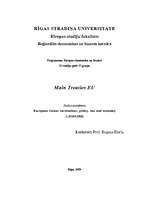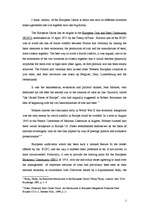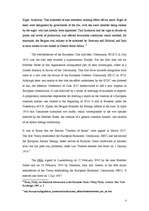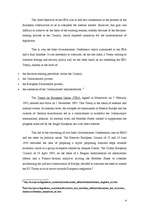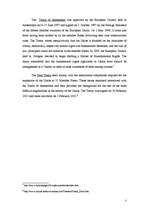-
Main Treaties of European Union
It was the businessman, economist and political thinker, Jean Monnet, who dedicated his life after the second war to the creation of what he like Churchill, called ”the United States of Europe”, who had orginally suggested to Robert Schumann the idea of beginning with the two basicindustries of coal and steel.1
Monnet cameto the conclusion early in World War II that economic integration was the only means by which conflict in Europe could be avoided. In a note in August 1943 to the French Committee of National Liberation in Algiers, Monnet claimed that there would benopeace in Europe “if States reestablished themselves on the basis of national sovereignty with all that this implies by way of prestige politics and economic protectionism”.2
European unification which has been such a marked feature fo the model offered by the ECSC, and the way it enabled other problems to be, if not solved, at least circumvented. Politically, it was to provide the starting point for the European Economic Community (EEC) of 1958, with the individual states agreeing to hand over the management of important sections of what had previously been seen as their national economy in accordance with Directives issued by a supranational body, the Hight Authority. …
history of the European Union is about that how so different countries make agreement and live together how one big family. The European Union has its origins in the European Coal and Steel Community (ECSC), established on 18 April 1951 by the Treaty of Paris. Political aim of the ECSC was to avoid the risk of future conflict between France and Germany by linking the basic elements in their economies, the production of coal and the manufacture of steel, more closely together. The best way to avoid a fourth conflict, it was argued, was to tie the economies of the two countries so closely together that it would become physically imposible for them ever to fight each other again, its first political aim has been totally achieved. The French and Germans then invited other Western European countries to jion them, and their inovation was taken up Belgium, Italy, Luxembourg and the Netherlands.

